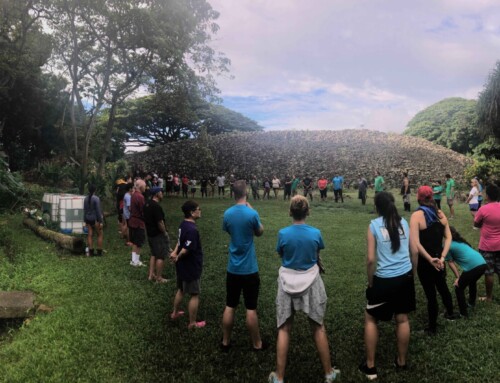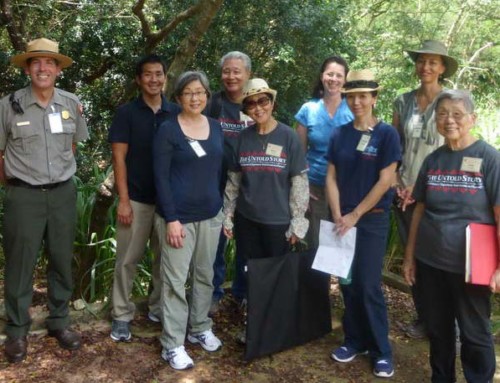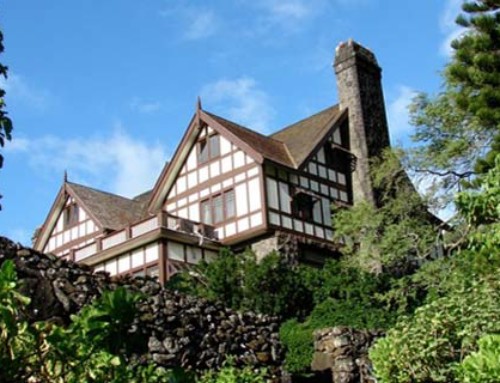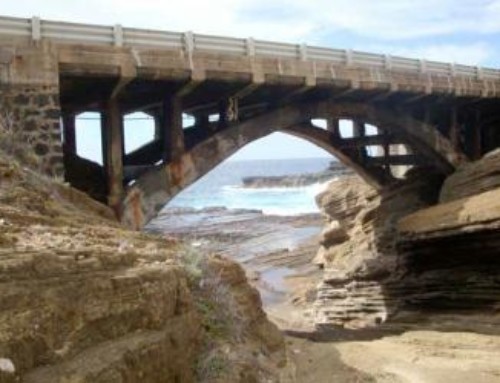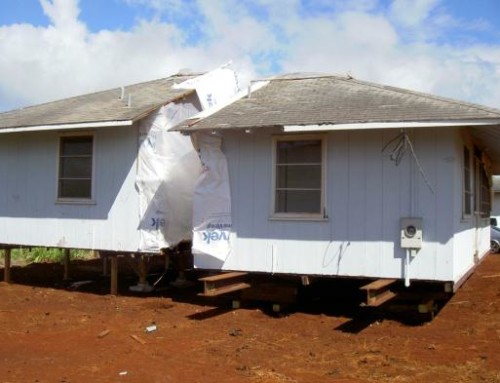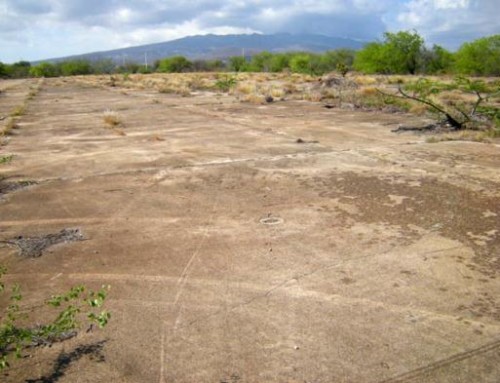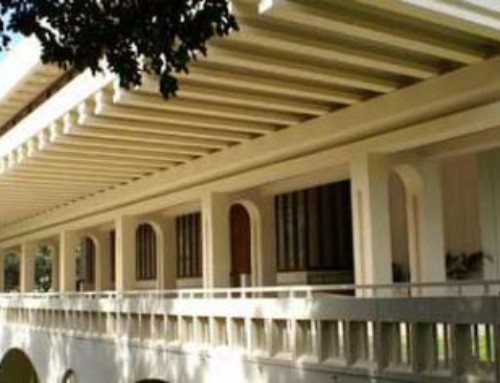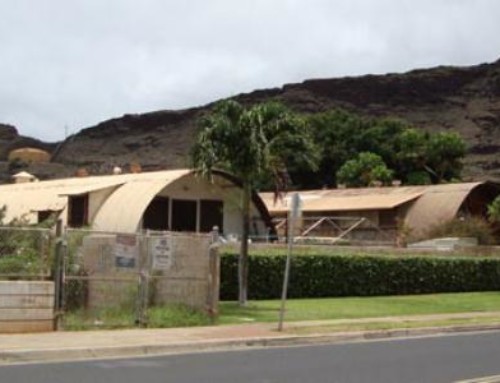By Kiersten Faulkner | From Forum Journal | Winter 2012 | Vol. 26, No. 2
The history of Hawaii, the United States, and the entire world was altered on December 7, 1941, when imperial Japan attacked United States forces on Oahu. That day of destruction, when eight battleships and 13 other ships were sunk or damaged, and on which 2,000 sailors and hundreds of members of other military services and civilians lost their lives, led directly to the entrance of the United States into World War II.
The facilities most associated with that day—and the war buildup that followed—were located at Pearl Harbor Naval Station. The installation had a distinguished history even before the Day of Infamy, from Native Hawaiian settlements that gave way to a military buildup in the late 19th century, which eventually grew into a critical component of the United States’ national defense. Following the war, the naval base was scaled back to a lower level of occupation, but its service as a critical part of national defense strategy continues to the present day.
Pearl Harbor’s significant history and ongoing utility were recognized when it was named a National Historic Landmark in January 1964, less than 23 years after the December 1941 attack. The NHL designation recognized Pearl Harbor’s historic role in the expansion of the United States as a Pacific power, but also as an active military facility that could continue to change and modernize.
As the statewide preservation organization dedicated to perpetuating significant historic properties in the Hawaiian Islands, Historic Hawaii Foundation (HHF) found itself in regular discussions with the United States Navy about impacts to historic resources on the naval base. The Navy focused on its mission requirements, but also had stewardship responsibilities for one of the most important historic sites in the country. The formal framework for these discussions came through the Section 106 process, specifically the requirement that federal agencies consult with organizations that have “a demonstrated interest in the undertaking” (36 CFR § 800.2(c)(5)).
HHF joined other preservation partners—including the state historic preservation office (SHPO), the National Trust for Historic Preservation, the National Park Service, the Office of Hawaiian Affairs, and the Advisory Council on Historic Preservation—to work with the Navy in a systematic and sustained effort to bring a preservation ethic to planning and analysis of construction and demolition projects at Pearl Harbor. The efforts resulted in a Programmatic Agreement (PA) that outlined consultation processes that would be followed for major projects, as well as a monitoring and reporting protocol to address minor undertakings. The PA was executed in 2003 and remains in effect; HHF signed as a concurring party to the agreement.
“Modernization” Threatens Shipyard
This momentum and collaboration was interrupted when the Navy came under increasing pressure to demonstrate mission and financial efficiencies. The situation came to a crisis point when the Congressional Base Realignment and Closure Commission recommended in 2005 that the then 97-year-old Pearl Harbor Naval Shipyard be closed. The shipyard is the state’s largest industrial employer and is a major supporter of engineering and trades programs, critical to economic diversity and development of a skilled workforce. State leaders leapt to the shipyard’s defense and pledged to find greater efficiencies to make it a 21st-century facility. A probationary period then began which allowed time for needed changes to be made.
In a sweeping over-generalization, the Pearl Harbor Shipyard declared that its operational difficulties were almost solely the result of aging infrastructure and the constraints of historic preservation regulations. The preservation issues became a convenient scapegoat that masked weaknesses in industrial operations, including “silos” of shop-based workflow that had been entrenched for decades. “Modernization” efforts included a 25-year plan that relied on wholesale demolition of everything from the dry docks to industrial shops and office buildings. The plans gave no consideration to historic significance, character-defining features, cultural landscapes, or viewsheds. The price tag for demolition and new construction was in the billions.
The first undertaking brought forward under the modernization scheme proposed demolition of three of the oldest industrial shops in the district, some dating to before World War I, and the demolition of newer building additions, deemed incompatible by the Navy. Navy planners cited the need to address inefficiencies; preservation partners countered with the need to respect and embrace the district’s rich history and significant architecture.
Community leaders took sides, with some angry that preservation concerns appeared to obstruct progress and job creation, while others were livid that the military and business interests appeared to cavalierly discard a century of history and dismiss the importance of the places that turned the tide of world affairs. Both sides dug in, creating a major impasse.
Against this backdrop, the Section 106 consultation process played out. The process followed the prescribed steps: define the undertaking; define the area of potential effect; identify the historic properties; determine if there is an adverse effect; determine how to avoid, minimize or mitigate that adverse effect; document and execute the agreement.
The first stages proceeded quickly: yes, there is an undertaking; yes, it has an adverse effect on historic properties. So what is to be done about it?
Through the consultation process, the preservation partners asked the Navy to look at alternatives, not only in regard to the built environment, but also to operational considerations. What size facilities were needed for the functions, where did they need to be located, and what changes were needed to allow those functions to be placed in historic buildings? The shipyard checked and re-checked assumptions, and found new and creative ways to meet its operational needs by making changes to co-locating functions and revising workflow processes, which would then be supported by physical changes to shops and the industrial yard.
After numerous meetings, site visits, discussions, relationship-building exercises, and a change in key Navy leadership, an agreement was reached. The shipyard revised the undertaking to include demolition of only two, later-period additions to two of the shops; adaptive use of an office building; and preservation of three industrial shops. The preservation partners agreed to major interior changes, adaptations to some facades and finishes, as well as site changes and new construction, subject to design review.
More importantly, the consultation process resulted in rethinking the 25-year “modernization” plan. The shipyard scrapped the original plan of demolishing the entire district to make way for new construction, and instead forwarded a plan that included adaptive use of significant historic facilities, removal of temporary structures, selective demolition and de-accessioning, and design guidelines for new construction. The revised plan integrated operational changes with facilities upgrades.
Rear Admiral-Select Greg Thomas (then Captain) became commander of the Pearl Harbor Shipyard during this critical time frame. He credits the turnaround and ultimately successful agreement to several key factors. He feels strongly that developing a long-range plan for the shipyard’s infrastructure made a difference. He said, “I believe the rational insistence that we show how each proposed building modification, demolition, or addition fit into a larger plan helped us understand impact and options much better than had that not been stressed.”
New Strategies Developed
The broader Navy Region Hawaii is using the case study from the shipyard to develop a new way to think about its facilities and its stewardship responsibility to the Pearl Harbor National Historic Landmark. A new preservation unit was established within the design and construction engineering command, with the goal of addressing preservation issues much earlier in the planning process. Master planning for the base strives to integrate mission needs within existing facilities, with directives to look first to historic buildings for adaptive use before proposing demolition or new construction. In addition to the preservation benefits, the new approach is proving more financially prudent and fiscally responsible.
The preservation partners have also had to adjust, especially in acknowledging that working military facilities have security and operational needs that make some designs incompatible with the Secretary of the Interior’s Standards and have learned to respond with greater flexibility. The partners have also learned to better understand mission needs and to help find ways to achieve project goals. Preservationists have established a hierarchy of priorities—the preservation of interior features ranks much lower than preserving the exteriors, for example. If an entirely new function can occur inside a historic exterior, it is considered a good outcome.
Historic Hawaii Foundation’s Role
HHF’s role in this process is unique. The organization is non-governmental, which means it lacks the regulatory authority that the SHPO and ACHP can invoke. However, it also has stronger and deeper community ties. It has built a base of members and supporters over 40 years of history, and that gives it moral authority as the voice for the places, culture, and stories that matter in Hawaii. HHF’s relationships proved to be critical in moving forward, as the organization worked to educate and secure the support of its congressional delegation, state and local officials, business and labor leaders.
The foundation listened to the broader community concerns, not only about preserving history, but also about meeting the timelines and changes needed to keep the shipyard viable. In many ways, HHF served as a translator and convener of value systems and goals; preservation and economics; national defense and being good neighbors. HHF became the voice that balanced input from all sources, ultimately resulting in an outcome that everyone could accept.
From the agency’s perspective, RDML Thomas also emphasized the importance of relationship building. He noted that thanks to the involvement of HHF and others, the Navy was able to revisit the adaptive use of a number of older buildings and develop architectural modifications that make new facilities match the historic skyline features.
Thomas also said that the consultation process and the involvement of the advocacy groups affected the attitude of both the Navy leadership and shipyard workers. “The relationship helped our shipyard team see the beauty in the property we were in,” he said. “We committed to taking better care of our shipyard, in part because of the sense that people, particularly the partners, were willing to work with us to preserve the beauty without compromising the mission.”
Not all of the progress resulted from the formal consultation process. The discussions and the search for common ground also occurred in other ways, especially through networking, community outreach, and informal discussions. Thomas agreed, saying that, “A couple of key senior leader meetings to maintain great relationships helped keep us in a positive frame of mind.”
Valuable Lessons Learned
The lessons learned from the shipyard consultation experience also inform the HHF’s Section 106 interactions with other federal agencies. HHF regularly participates as a consulting party in major undertakings with federal agencies such as the Federal Transit Administration, Federal Highway Administration, Department of Veterans Affairs, National Park Service, and Department of Agriculture.
HHF follows several principles that guide its participation:
- Get the facts. What is the historic property, what makes it significant, what is the project, and what is the agency trying to achieve? Does the proposed undertaking endanger a historic resource and how can that effect be changed?
- Be prepared. Be organized and responsive; identify the players and potential allies; understand the agency, community, stakeholder, and regulatory concerns.
- Be selective. Because there are a limited number of people and hours in the day, use them on the right projects and at the right time. We need to triage the projects that warrant our participation, based on the significance of the resource, the level of threat, the participation of other stakeholders or organizations, and internal capacity of time and personnel.
- Be reasonable, but don’t be afraid to say no. Use experts, have the law on your side, work to find win-win solutions. But don’t underestimate the power of standing firm in the protection of the historic resource. There are usually alternatives that haven’t yet been developed that would protect the historic property and still achieve the project’s objectives.
- Act with integrity. We strive to be consistent in our objectives and build credibility, trust, and community support. In the heat of discussions, it is easy to be drawn into personalities, but try to stay objective. The proponents aren’t evil, they just have different objectives. Don’t let it be personal.
- 6. Document the agreement. The final written agreement needs to stand on its own. It cannot rely on institutional knowledge or the relationship of the parties. People move on, memories fade, and circumstances change. Make sure the written document clearly explains the agreement without theneed for interpretation.
As our staff has become expert in the Section 106 process, we have tried to share that expertise with other preservation advocacy groups. We’ve provided technical assistance and guidance to all-volunteer grassroots groups to help them become empowered and confident in their rights and ability to participate in the process.
The effects of HHF’s involvement as a consulting party to Section 106 have continued to ripple out, resulting in protection of historic bridges and railroads, rehabilitation of sugar plantation workers’ housing, and substantive mitigation measures in situations when the adverse effect cannot be avoided or minimized. We feel that the results have been extremely positive, both in preservation of historic properties and in building the capacity of our organization and our partner groups.



